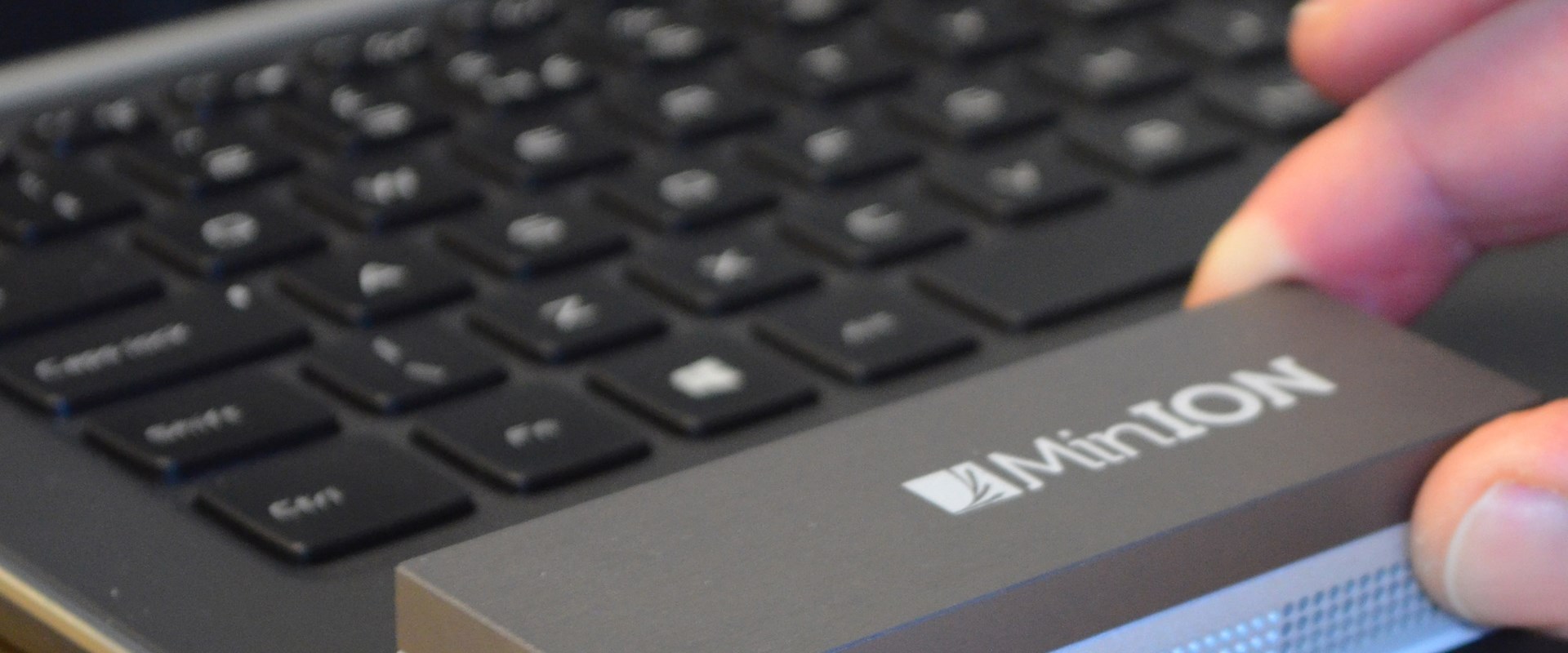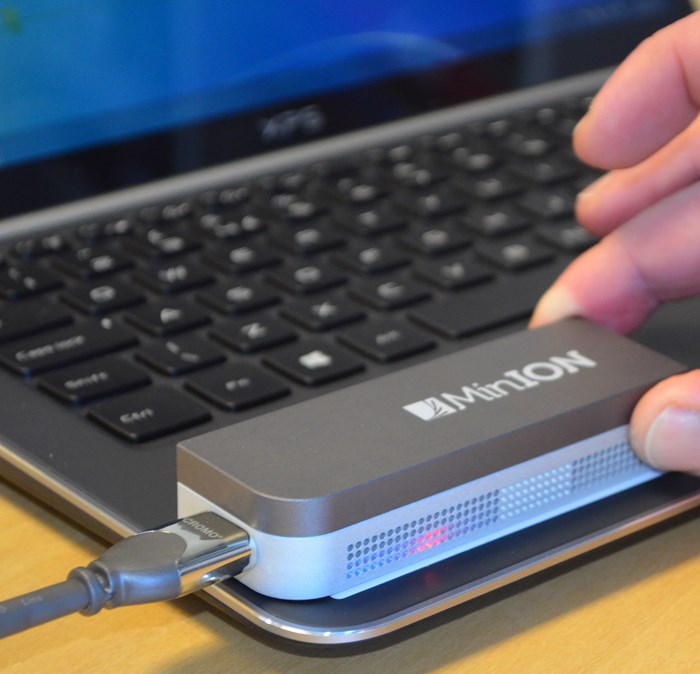Key in a search term below to search our website.
Key in a search term below to search our website.

Science and Technology volunteer Susanne Hotvedt introduces this powerful piece of small technology.
"Wow!", that's the first word I said out loud when I saw the MinION DNA sequencing machine. But why is it so special? Well, first and foremost it's the small size - in this case, size actually matters.
Most DNA sequencing machines are huge. Imagine your fridge; that's how big they normally are. The MinION, however, fits into your hand. And even more cool, you just plug it into the USB port of your computer to start analysing biological samples. Well of course, it's not quite that easy! First you have to prepare your samples, then run it on the MinION machine, and afterwards you have to analyse the data. But the small size of the MinION DNA sequencing machines is really what makes it special.

DNA sequencing is about reading DNA. All living thing - whether it be you, your cat or the bacteria in your garden soil - have DNA in their cells. DNA is the recipe of life: it tells your body how to produce important messenger molecules and vital building blocks, and lots of other things too. DNA is often tightly packed together inside our cells, as in a closed cookbook. But when the recipe is needed, some parts of the DNA molecules are opened up to make the DNA readable. So not quite as you would read a page in a cookbook, but it's helpful to think of it like that.
Why would you need to read DNA? The cells in our body and other living organisms need to read DNA to make use of it. That is, to make those molecules and building blocks I mentioned above. But scientists and hospital staff also read DNA - this is what we call DNA sequencing. They use sequencing in diagnostics to understand how dangerous (pathogenic) bacteria and viruses spread, and to look for future cures for disease.
Imagine you are a health worker or scientist based far away from a hospital, as was often the case during the Ebola outbreak in west Africa first reported in 2013. You know it would take time and money, neither of which you have in ample supply, to get samples sent to the nearest hospital or research facility for analysis. And as normal DNA sequencing machines are big, fragile and expensive, you can't bring it to the patient either.
Or can you? That's just what a team of researchers did in April 2015 in Guinea. They packed their MinION equipment into suitcases and went out to their patients. They didn't have room or funds for a big DNA sequencing machine, but they did have room for a small and portable MinION. It's portable power.